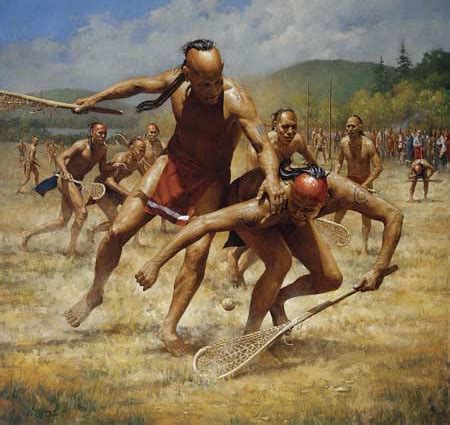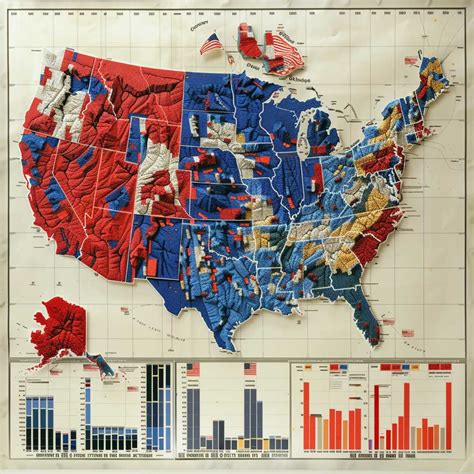Explore the rich cultural significance and evolution of lacrosse, from its Indigenous roots to modern gameplay and equipment developments.Lacrosse is a sport rich in history, with a captivating journey that traces its origins back to Indigenous cultures. As one of North America’s oldest team sports, lacrosse has undergone a remarkable evolution, transitioning from sacred tribal rituals to a structured, modern-day game played by millions. In this article, we will explore the cultural significance of lacrosse within Indigenous communities, examine how the game evolved over the centuries, and delve into the rules and equipment that have shaped today’s gameplay. We will also highlight the lasting influence of Native American traditions on lacrosse as we know it today. Join us as we uncover the fascinating history of lacrosse, celebrating its unique heritage while shedding light on its current status as a beloved sport across the globe.
Indigenous Roots Of Lacrosse: Understanding Its Cultural Significance
The history of lacrosse can be traced back to its deep-rooted origins within Indigenous cultures across North America. For many Native American tribes, lacrosse was not merely a sport but a significant cultural ceremony that held great meaning and purpose. This ancient game was often referred to as the Creator’s Game, symbolizing spiritual connection and community.
Traditionally, lacrosse was played to settle disputes, foster unity among tribes, and honor the spirits. Participants believed that the game was a way to communicate with the divine, making it a vital aspect of Indigenous spiritual and cultural identity.
Players would often participate in elaborate ceremonies before games, including prayers and rituals to pay homage to their ancestors and seek blessings for victory. The game also served as a form of entertainment, showcasing skill, agility, and teamwork, but its significance went far beyond these attributes.
Additionally, the sticks used in traditional lacrosse were crafted from wood, often adorned with intricate designs that represented the player’s tribe and personal stories. The balls were made from hides or other natural materials, emphasizing the connection between the sport and the environment.
As the sport evolved over the years, many Indigenous communities maintained their cultural practices and traditional values within the game, ensuring that the history of lacrosse remains an essential aspect of their identity. Understanding these roots provides valuable insight into the rich cultural significance of lacrosse. The connection between Indigenous history and the modern game continues to influence lacrosse today, highlighting its enduring legacy.
Evolution Of The Game: From Traditional To Organized Sport
The evolution of lacrosse from a traditional Indigenous game to a structured organized sport is a fascinating journey that reflects broader societal changes. Initially used as a cultural and spiritual practice, lacrosse served not only as a sport but also as a means for communities to engage in rituals and foster social cohesion.
As European settlers began to take interest in the game in the 17th century, its definitions and rules gradually started to shift. The sport began to adopt elements from British sports, leading to the establishment of more codified rules. The first formalized rules for lacrosse were created in 1867 by Canadian dentist William George Beers, who is credited with laying the foundation for organized play.
Under Beers’ guidance, lacrosse shifted from a game played primarily by Indigenous peoples to one that included clubs and leagues, reflecting the societal structures of the time. The formation of associations, such as the National Lacrosse Association in 1870 and later the Lacrosse Federation of Canada in 1932, further contributed to the institutionalization of the sport.
Throughout this period, lacrosse transitioned into a more competitive landscape, with distinct styles emerging, such as field lacrosse and box lacrosse. The introduction of formal leagues and competitions enabled players to pursue the sport at higher levels, paving the way for professional tournaments and international play.
Today, the game’s historical roots remain an integral part of its identity, yet it has evolved into a globally recognized sport characterized by organized teams, championship events, and a rich blend of traditions. As we look back at the history of lacrosse, it’s important to appreciate how these developments have shaped not only the game itself but also its role in the broader cultural consciousness.
The History Of Lacrosse Rules: Shaping Modern Gameplay
The evolution of lacrosse rules is a fascinating journey that has significantly impacted the game’s flow, strategy, and overall gameplay. As lacrosse transitioned from its indigenous roots to a structured sport, the formulation of rules became vital in appealing to a broader audience while preserving its rich heritage.
Initially, lacrosse was played with minimal regulations, largely governed by the customs of the Native American tribes. Matches often involved hundreds of players, and games could last for hours, with no standardized field size or player positions.
However, as lacrosse gained popularity in the 19th century, particularly in Canada and the United States, the need for standard rules became evident. In 1867, the Canadian Lacrosse Association was established, leading to the first formal set of rules being published. This was a significant milestone in the history of lacrosse, as it marked the transition from a free-form indigenous game to a formalized sport.
| Year | Event |
|---|---|
| 1867 | Formation of the Canadian Lacrosse Association and publication of the first formal rules. |
| 1876 | Introduction of the first organized lacrosse championship in Canada. |
| 1934 | Establishment of the first women’s lacrosse league in the U.S. |
| 2001 | Introduction of the NCAA Men’s Lacrosse Championship format. |
As lacrosse continued to grow, particularly at the collegiate and professional levels, further modifications to the rules were made to enhance safety, promote sportsmanship, and ensure fair play. The introduction of protective gear, restrictions on body checking, and clearer definitions of what constitutes a foul were critical changes that shaped how the game is played today.
In recent years, rule adaptations have focused on making the sport faster and more exciting to watch. Shot clocks, increased offensive opportunities, and changes in the faceoff rules are examples of how modern lacrosse continues to evolve while rooted in its rich past. The journey of these rules reflects a balance between maintaining the heritage of lacrosse and embracing the future of competitive play, thereby shaping the modern game as we know it.
Influence Of Native American Practices On Lacrosse Today
The game of lacrosse has deep roots in Native American culture, with elements that continue to shape the sport in its modern form. Various tribes have contributed their unique traditions, rituals, and gameplay styles, emphasizing teamwork, strategy, and spirituality. These indigenous practices enrich the sport, making it not only a physical contest but also a cultural expression.
One significant influence from Native American practices is the emphasis on the communal aspect of the game. For many tribes, lacrosse was played to foster unity and strengthen community bonds, often involving the entire village in not just playing but also in supporting their teams. Today, this spirit of community and togetherness remains vital in lacrosse, as it is often played in teams, building lasting friendships and camaraderie among players.
Additionally, traditional Native American lacrosse often involved ceremonial elements. Games were sometimes held to commemorate significant tribal events, and the players participated in rituals to honor the spirit of the game. This spiritual connection is echoed in modern lacrosse, where players and teams pay tribute to their cultural heritage, integrating elements of tradition in their pre-game practices and celebrations.
The stick used in traditional lacrosse varies among tribes, each having its own design and craftsmanship techniques, directly impacting today’s equipment. Modern sticks, while technologically advanced, are still inspired by the craftsmanship and aesthetics of their traditional counterparts. For instance, the use of synthetic materials in sticks and nets can be linked to the original lacrosse stick designs, which were made from wood and natural fibers, showcasing the evolution of the sport while respecting its origins.
Moreover, the governed rules in today’s lacrosse can be traced back to the informal practices of Native American tribes, where players relied on a combination of skill and respect for their opponents. This ethos of respect remains a cornerstone in contemporary lacrosse games, where sportsmanship is emphasized alongside competitiveness.
Overall, the integration of Native American practices and philosophies into the game of lacrosse illustrates a unique fusion of tradition and modernity. Its historical roots continue to influence how the sport is played, viewed, and respected, making the story of The History of lacrosse a profound narrative of cultural significance that transcends generations.
The History Of Lacrosse Equipment: From Sticks To Modern Gear
The evolution of lacrosse equipment is a fascinating journey that mirrors the growth of the sport itself. Initially, the game was played with sticks crafted from wood, typically made from the branches of trees and designed to suit the player’s preferences. These early sticks, called crosse, were not only functional but also held cultural significance for Indigenous players, often featuring intricate designs and personal embellishments.
As lacrosse gained popularity, especially in the mid-19th century, the need for standardized equipment became apparent. Players began to seek improvements in stick design for enhanced performance. The introduction of gut strings, which replaced the original leather or sinew, provided better ball retention and control. This shift marked the beginning of transition towards modern equipment.
By the 20th century, with the establishment of organized leagues and formalized rules, equipment innovations continued rapidly. The introduction of aluminum and composite materials revolutionized stick manufacturing, resulting in lighter, more durable sticks that significantly improved gameplay. Manufacturers began producing specialized sticks for different playing positions, catering to the unique needs of goalies, attackmen, and defensemen.
Today, lacrosse equipment is characterized by advanced technology and design, prioritizing player safety and performance. Helmets are now mandatory in most leagues, incorporating impact-absorbing materials to reduce the risk of head injuries. Similarly, pads and gloves are designed with breathable fabrics, offering both protection and comfort.
As we reflect on the history of lacrosse equipment, it becomes clear that each advancement has contributed to making the game not only safer but also more enjoyable for players of all levels. The evolution from traditional wooden sticks to high-tech gear underscores how the history of lacrosse is intertwined with the ongoing development of sports technology.
Frequently Asked Questions
What are the origins of lacrosse?
Lacrosse originated among Indigenous peoples in North America, where it was played by various tribes for centuries as a spiritual practice and a means of resolving conflicts.
How did lacrosse evolve from its indigenous roots?
Lacrosse evolved as it spread from Indigenous communities to European settlers, who adapted the game into a more structured sport in the 19th century, standardizing rules and equipment.
What role did the concept of the Creator play in traditional Indigenous lacrosse?
In traditional Indigenous cultures, lacrosse was often seen as a gift from the Creator, played for spiritual and ceremonial purposes, reflecting deep cultural significance.
When did lacrosse become an organized sport?
Lacrosse became organized in the mid-19th century, with the formation of clubs and governing bodies, particularly in Canada and the United States.
What are the main differences between men’s and women’s lacrosse?
Men’s lacrosse typically features contact and more protective equipment, while women’s lacrosse emphasizes speed and skill, with limited contact and different equipment rules.
How is lacrosse viewed in contemporary sports culture?
Lacrosse has gained popularity in recent years, often referred to as one of the fastest-growing sports in North America, with increasing participation at youth, collegiate, and professional levels.
What impact has lacrosse had on Indigenous communities today?
Lacrosse remains an important cultural symbol for Indigenous communities, serving as a means of preserving heritage, fostering community, and promoting physical and mental well-being.









